
Ljubljana: The Enchanting Heart of Slovenia
Discover Ljubljana, Slovenia's enchanting capital, where historical charm meets vibrant culture amidst stunning natural beauty.
Ljubljana, the charming capital of Slovenia, is a city that effortlessly blends the old with the new. Nestled between the Alps and the Adriatic Sea, this picturesque destination is known for its vibrant cultural scene, historical landmarks, and lush green spaces. The Ljubljanica River flows through the city, adding to its scenic beauty and providing a tranquil setting for leisurely strolls and boat rides. The city's old town is a treasure trove of history and architecture. Here, you can wander through narrow cobblestone streets, marvel at Baroque buildings, and visit the iconic Ljubljana Castle perched atop a hill. The castle offers panoramic views of the city and is a must-visit for anyone wanting to understand the rich history of Ljubljana. Ljubljana is also a green city, with numerous parks and outdoor spaces. Tivoli Park, the largest and most beautiful park in the city, is perfect for a relaxing day out. The city is also known for its vibrant open-air markets, where you can sample local delicacies and buy handmade crafts. With its friendly locals, lively cafes, and a wide range of cultural events, Ljubljana is a destination that promises an unforgettable experience.
Local tips in Ljubljana
- Visit Ljubljana Castle for panoramic views of the city.
- Take a boat ride along the Ljubljanica River for a unique perspective of the city.
- Explore Tivoli Park, the largest park in Ljubljana, for a relaxing day outdoors.
- Wander through the old town to see beautiful Baroque architecture and historic landmarks.
- Check out the local open-air markets for fresh produce and handmade crafts.
- Visit in spring or autumn to avoid the summer crowds and enjoy pleasant weather.
Ljubljana: The Enchanting Heart of Slovenia
Ljubljana, the charming capital of Slovenia, is a city that effortlessly blends the old with the new. Nestled between the Alps and the Adriatic Sea, this picturesque destination is known for its vibrant cultural scene, historical landmarks, and lush green spaces. The Ljubljanica River flows through the city, adding to its scenic beauty and providing a tranquil setting for leisurely strolls and boat rides. The city's old town is a treasure trove of history and architecture. Here, you can wander through narrow cobblestone streets, marvel at Baroque buildings, and visit the iconic Ljubljana Castle perched atop a hill. The castle offers panoramic views of the city and is a must-visit for anyone wanting to understand the rich history of Ljubljana. Ljubljana is also a green city, with numerous parks and outdoor spaces. Tivoli Park, the largest and most beautiful park in the city, is perfect for a relaxing day out. The city is also known for its vibrant open-air markets, where you can sample local delicacies and buy handmade crafts. With its friendly locals, lively cafes, and a wide range of cultural events, Ljubljana is a destination that promises an unforgettable experience.
When is the best time to go to Ljubljana?
Iconic landmarks you can’t miss
Ljubljana Castle
Explore the historical charm and breathtaking views at Ljubljana Castle, the iconic landmark of Slovenia's capital city.
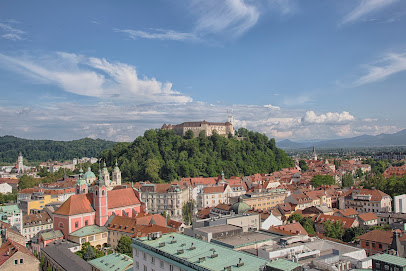
Dragon Bridge
Discover the enchanting Dragon Bridge, a stunning architectural marvel in Ljubljana, adorned with iconic dragon statues and breathtaking views.
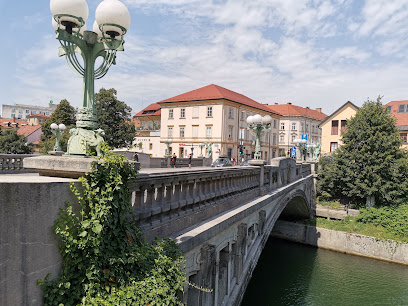
Tivoli Park
Discover the tranquility and beauty of Tivoli Park, Ljubljana's beloved green oasis, featuring stunning landscapes, art, and cultural attractions.

Prešernov trg
Discover the vibrant heart of Ljubljana at Prešernov trg, a cultural hub surrounded by stunning architecture and local charm.
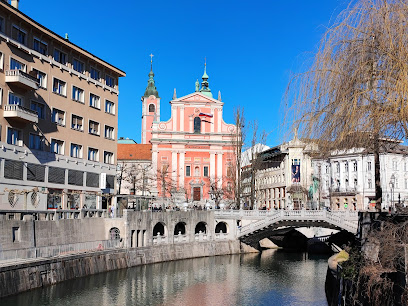
Kongresni Trg
Discover the charm of Kongresni Trg, Ljubljana's vibrant square filled with stunning architecture, lush greenery, and cultural events.

AKC Metelkova mesto
Discover the unique artistic atmosphere of AKC Metelkova Mesto, a vibrant cultural center in Ljubljana offering art, nightlife, and community events.
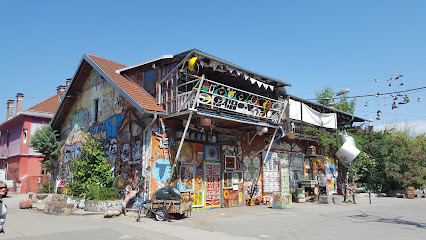
Nebotičnik - Skyscraper
Discover the Nebotičnik in Ljubljana, an iconic skyscraper offering stunning views, delightful refreshments, and a glimpse into the city's architectural history.
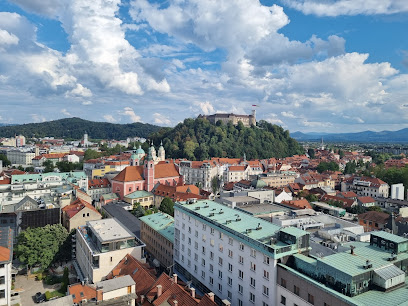
Central Market
Explore Ljubljana's Central Market, a vibrant hub of local culture and gastronomy, offering delicious delicacies and a lively community atmosphere.
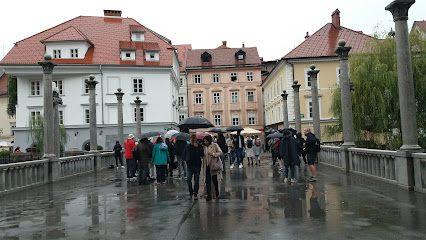
Triple Bridge
Discover the Triple Bridge, a stunning architectural gem that connects Ljubljana's old town with modern city life, offering picturesque views and a vibrant atmosphere.
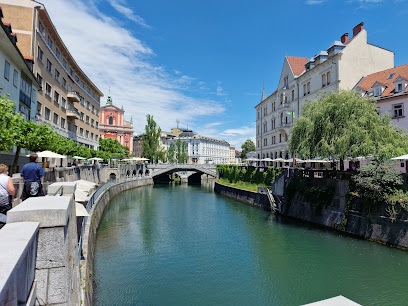
Saint Nicholas's Cathedral
Explore the majestic Saint Nicholas's Cathedral in Ljubljana, a stunning blend of Baroque architecture and rich cultural history, a must-visit for every traveler.
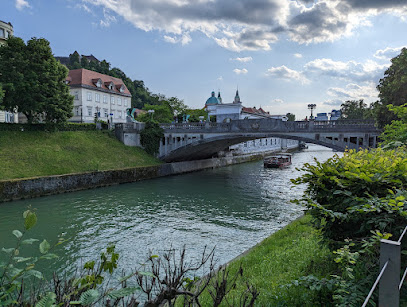
Botanični vrt Univerze v Ljubljani
Explore the serene beauty and rich biodiversity of Ljubljana's Botanical Garden, a peaceful retreat perfect for nature lovers and tourists alike.
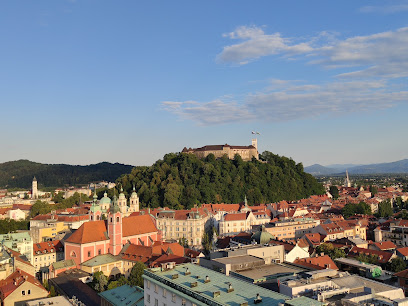
Ljubljana Castle Funicular
Experience the enchanting journey of the Ljubljana Castle Funicular, connecting you to history with breathtaking views of Slovenia's capital.
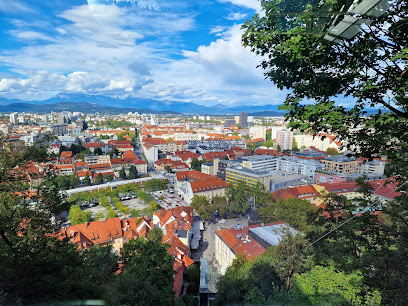
Franciscan Church of the Annunciation
Discover the architectural splendor and tranquil atmosphere of the Franciscan Church of the Annunciation in Ljubljana, a cultural gem for every traveler.
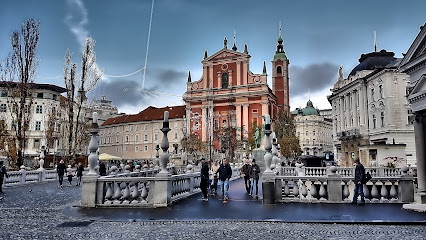
Ljubljana Free Tour
Explore the heart of Ljubljana with the Ljubljana Free Tour, offering enriching insights into Slovenia's capital while enjoying its stunning architecture and lively culture.
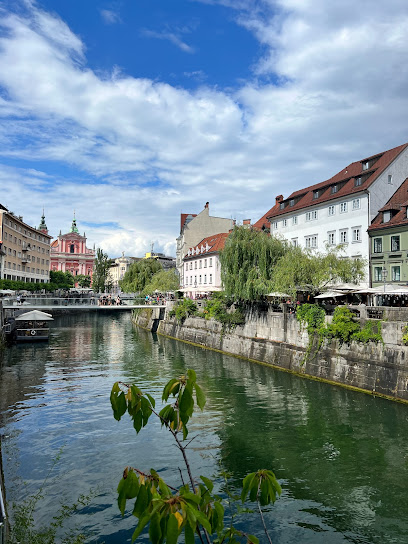
Narodni muzej Slovenije
Discover Slovenia's rich history at Narodni muzej Slovenije, a premier heritage museum in Ljubljana showcasing archaeological treasures and art.
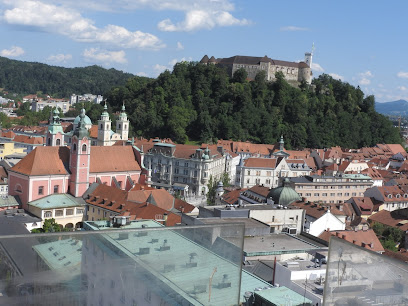
Unmissable attractions to see
Postojna Cave
Explore the stunning underground world of Postojna Cave, a breathtaking natural wonder and a UNESCO World Heritage site in Slovenia.
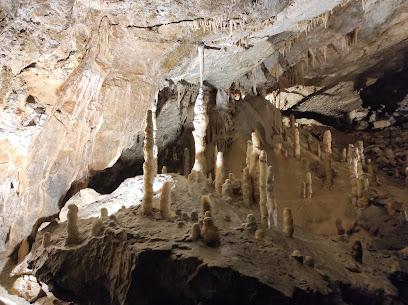
Ljubljana Castle
Explore the enchanting Ljubljana Castle, a historic fortress offering captivating views, rich heritage, and engaging exhibitions in Slovenia's vibrant capital.
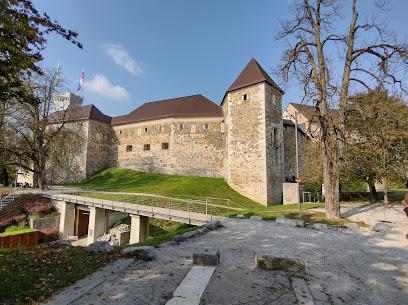
Bled Castle
Experience the enchanting Bled Castle, a historic fortress with breathtaking views of Lake Bled and rich cultural heritage in Slovenia.

Predjama Castle
Explore the captivating Predjama Castle, a stunning medieval fortress nestled in limestone cliffs, steeped in history and surrounded by breathtaking natural beauty.
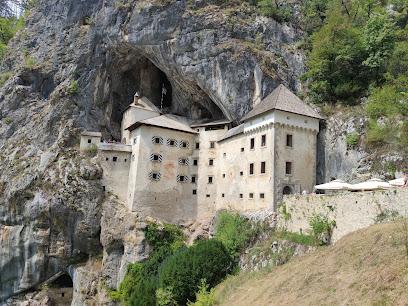
Dragon Bridge
Discover the iconic Dragon Bridge in Ljubljana, a stunning architectural landmark that embodies the spirit and history of Slovenia's capital.
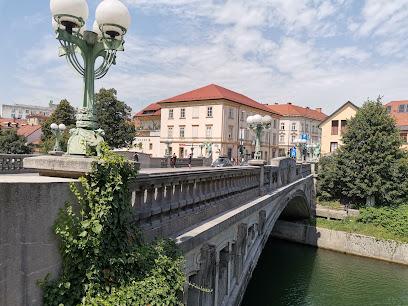
Soteska Vintgar
Explore the breathtaking Soteska Vintgar, a stunning natural gorge in Slovenia, famous for its crystal-clear waters and lush scenery.

Ljubljana Zoo
Explore Ljubljana Zoo, a captivating wildlife sanctuary in Slovenia's capital, showcasing diverse animal species and conservation efforts in a beautiful setting.
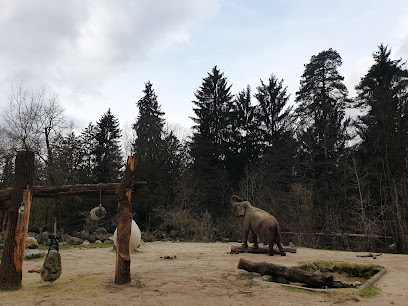
Prešeren Square
Explore Prešeren Square, Ljubljana's cultural heart, where history meets vibrant social life amidst stunning architecture.
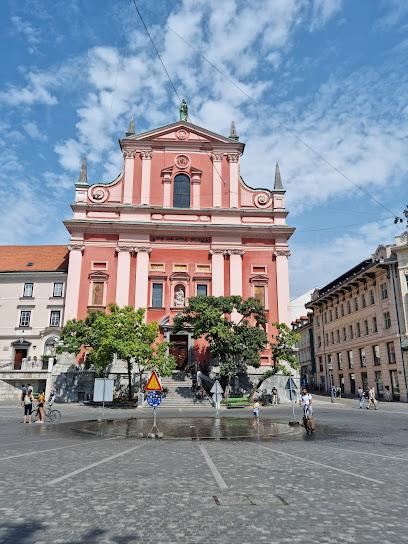
Kongresni Trg
Discover the charm of Kongresni Trg, a serene urban square in Ljubljana, where history, culture, and nature converge beautifully.
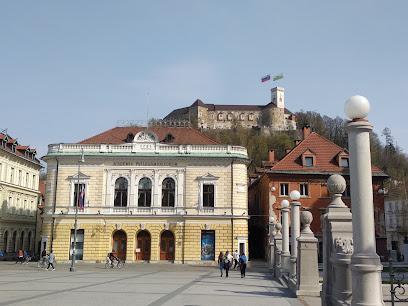
AKC Metelkova mesto
Explore the artistic heartbeat of Ljubljana at AKC Metelkova Mesto, a cultural haven filled with street art, live music, and creative energy.
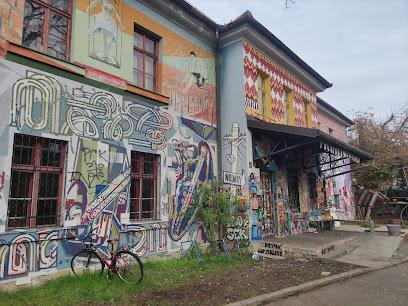
House of illusions
Discover the House of Illusions in Ljubljana, a must-visit attraction full of mind-bending optical illusions and interactive exhibits for all ages.
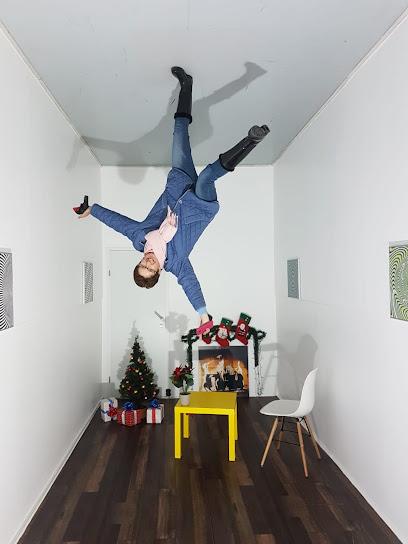
Logar Valley
Experience the breathtaking beauty of Logar Valley, a glacial paradise in Slovenia, perfect for hiking, nature photography, and cultural exploration.
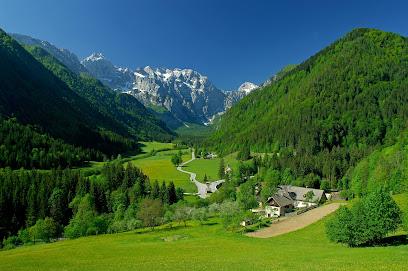
Cankarjev dom
Discover the artistic soul of Ljubljana at Cankarjev Dom, the premier cultural center showcasing concerts, exhibitions, and unforgettable performances.
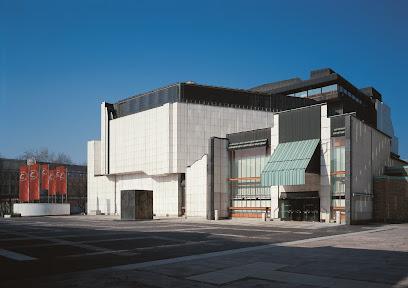
Mozirski gaj
Experience the enchanting beauty of Mozirski Gaj, a serene botanical park in Slovenia filled with vibrant flowers, tranquil pathways, and cultural delights.
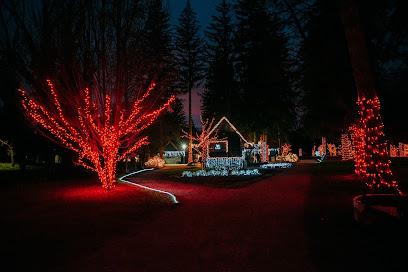
Nebotičnik - Skyscraper
Discover breathtaking views and rich history at Nebotičnik, Ljubljana's iconic skyscraper combining stunning architecture with a vibrant café scene.
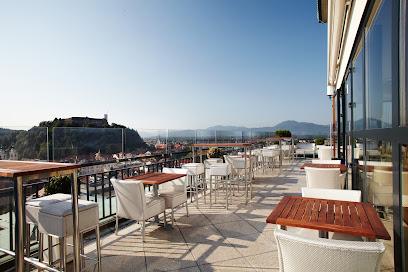
Essential places to dine
Pop's place
Experience local flavors at Pop's Place in Ljubljana - where gourmet dishes meet vibrant atmosphere by the riverside.
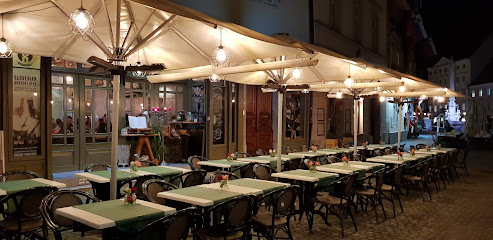
Le Petit Cafe
Discover Le Petit Cafe: A charming bistro in Ljubljana offering exquisite French cuisine and cozy atmosphere perfect for breakfast or brunch.
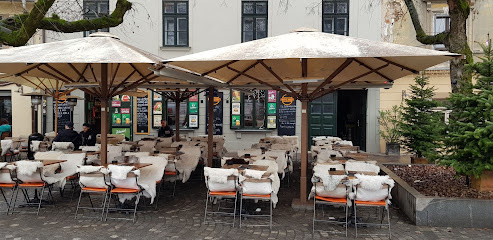
Julija
Discover the essence of Slovenian cuisine at Julija in Ljubljana – where tradition meets modern culinary artistry.
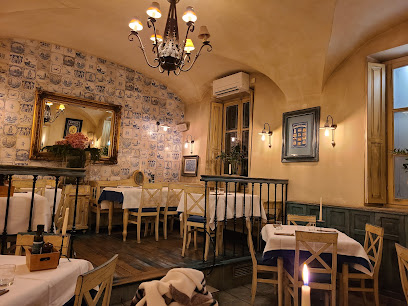
Gostilna Sokol
Experience authentic Slovenian cuisine at Gostilna Sokol - where tradition meets flavor in the heart of Ljubljana.
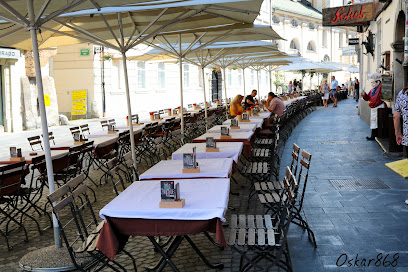
Abi Falafel
Experience authentic Mediterranean flavors at Abi Falafel in Ljubljana - a must-visit destination for food lovers seeking delicious falafel and more.
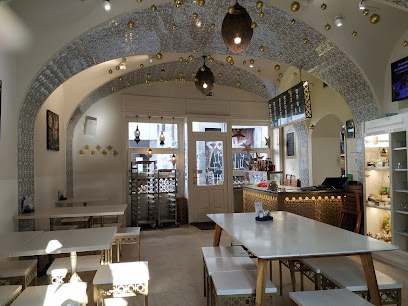
Slovenska Hiša - Figovec
Experience authentic Slovenian cuisine at Slovenska Hiša - Figovec in Ljubljana's vibrant dining scene.
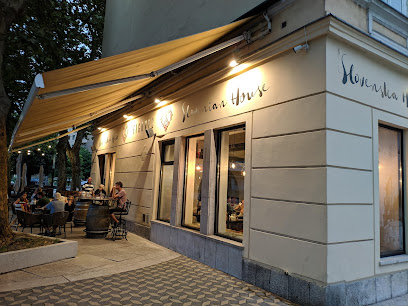
Das ist Valter
Experience authentic Slovenian cuisine at Das ist Valter in Ljubljana - where every dish tells a story.
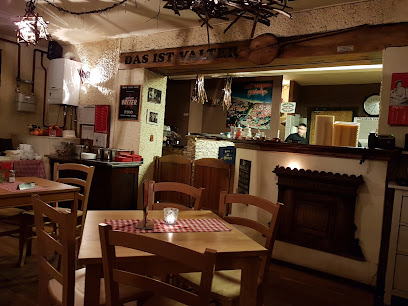
Druga Violina
Experience authentic Slovenian cuisine at Druga Violina - where tradition meets affordability in the heart of Ljubljana.
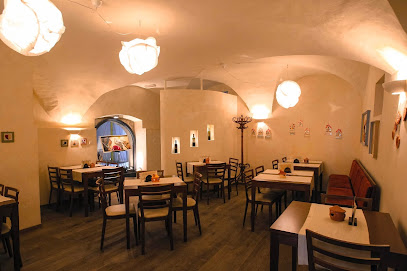
Restaurant Šestica
Discover the rich flavors of Slovenia at Restaurant Šestica – where tradition meets modern cuisine in a charming setting.
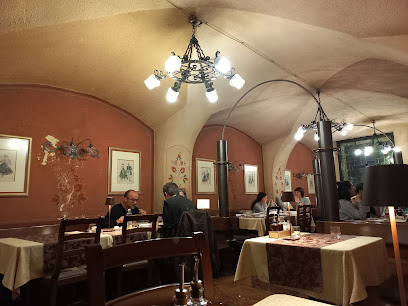
Špajza Restaurant
Experience authentic Slovenian cuisine at Špajza Restaurant in Ljubljana - where tradition meets modern taste.
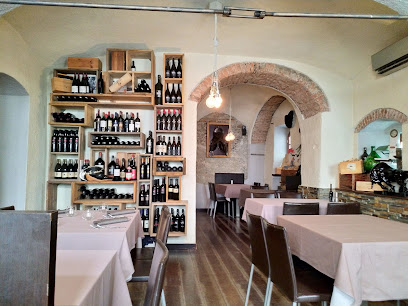
Dežela Okusov - Top quality 100% gluten-free cuisine
Discover Dežela Okusov: Ljubljana's premier destination for exquisite 100% gluten-free cuisine that delights your palate without compromise.
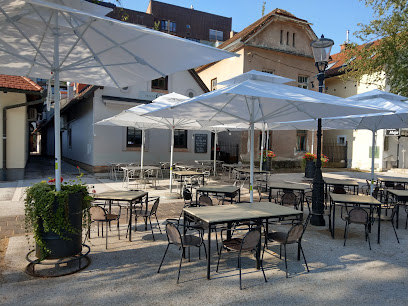
Restavracija Most
Experience authentic Slovenian cuisine with picturesque river views at Restavracija Most in Ljubljana.
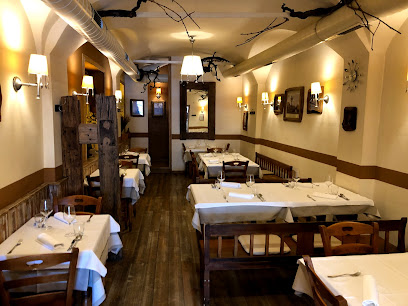
Klobasarna
Discover authentic Slovenian flavors at Klobasarna, where every bite tells a story of tradition and taste.
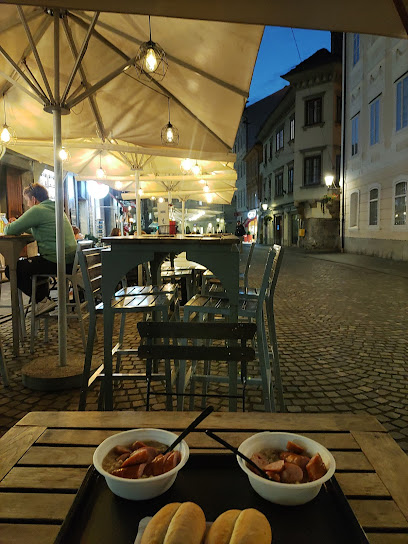
EK BISTRO
Discover culinary excellence at EK BISTRO in Ljubljana – where local flavors meet modern dining in an inviting riverside setting.
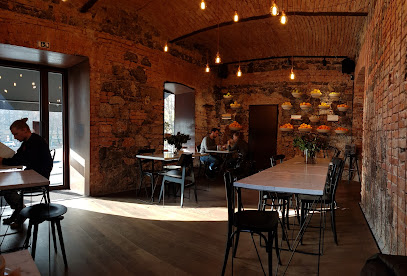
Ošterija Pr'Noni
Experience authentic Slovenian flavors at Ošterija Pr'Noni in Ljubljana's vibrant dining scene.
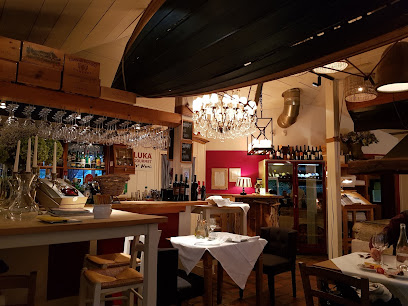
Markets, malls and hidden boutiques
BTC City Ljubljana
Discover the dynamic shopping, dining, and cultural experiences at BTC City Ljubljana, the ultimate shopping destination in Slovenia.
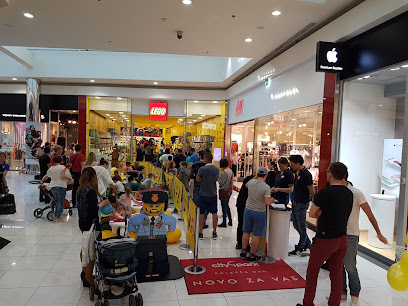
Shopping Center Citypark
Shop, dine, and relax at Citypark, Ljubljana’s vibrant shopping center with a diverse range of stores and eateries.
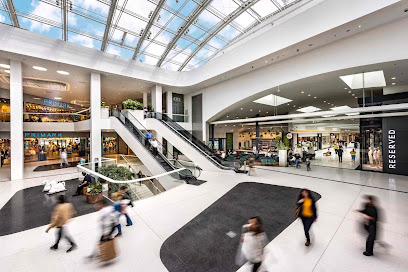
Emporium
Discover Emporium, Ljubljana's premier shopping mall, blending fashion, culinary delights, and local culture for an unforgettable experience.

Nama
Discover Nama in Ljubljana, a vibrant department store offering a diverse range of products from fashion to home essentials in the heart of Slovenia.

Emporium Gallery
Discover the latest fashion trends at Emporium Gallery in Ljubljana, where style meets exceptional customer service in a modern shopping experience.
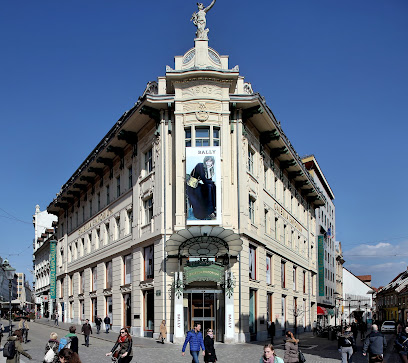
Red Eye Monkey - Cannabis shop
Explore the vibrant cannabis culture at Red Eye Monkey - Ljubljana's premier cannabis shop offering quality products and expert advice.
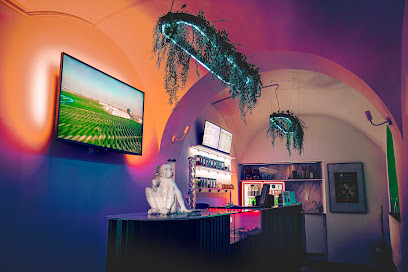
Vineria del Ponte - wine shop with a wide variety of labels from Slovenia
Explore the exquisite selection of Slovenian wines at Vineria del Ponte, Ljubljana's charming wine shop in the heart of the city.
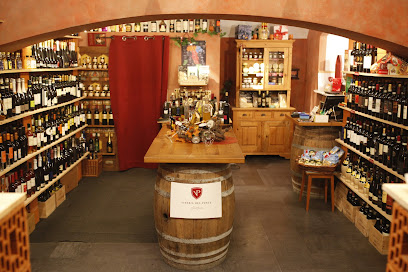
Treasures of Slovenia Ljubljana
Explore authentic Slovene souvenirs and gourmet treats at Treasures of Slovenia in Ljubljana, a must-visit gift shop for every tourist.
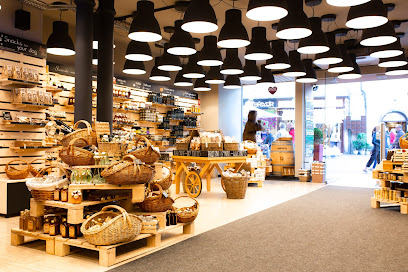
Babushka Boutique
Explore Babushka Boutique in Ljubljana for unique handcrafted gifts and jewelry that embody the spirit of Slovenia's rich culture.
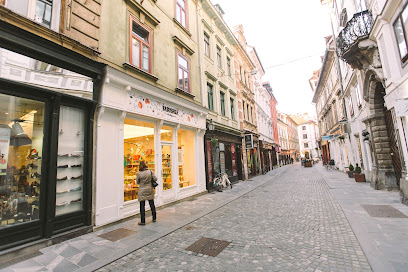
Souvenir Shop Our Story
Explore Slovenia's rich heritage through unique gifts and memorable souvenirs at Souvenir Shop Our Story in Ljubljana.
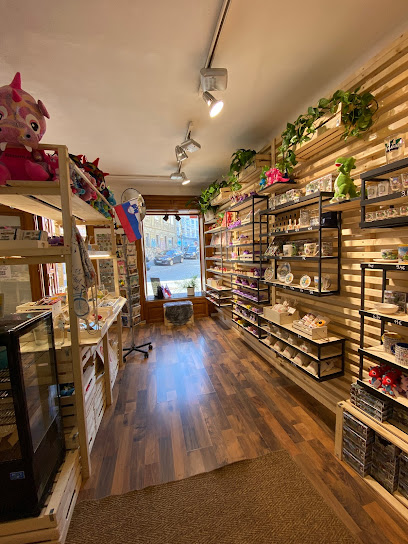
Trgovina IKA, d.o.o.
Explore Trgovina IKA, Ljubljana's premier gift shop offering unique souvenirs, art, and fashion accessories for discerning travelers.
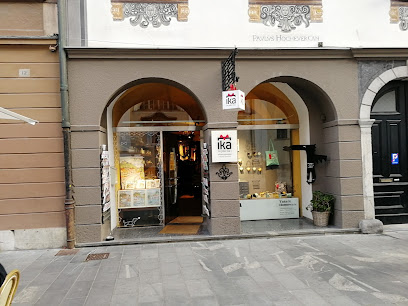
Moje Tvoje
Explore the charm of Ljubljana at Moje Tvoje, a vintage store filled with unique secondhand clothing and sustainable fashion treasures.
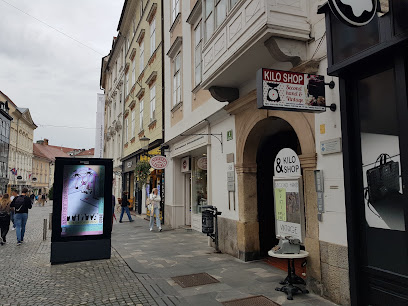
Vintage Shop by Textile House
Explore unique vintage finds at Textile House, Ljubljana's charming destination for sustainable fashion and timeless treasures.
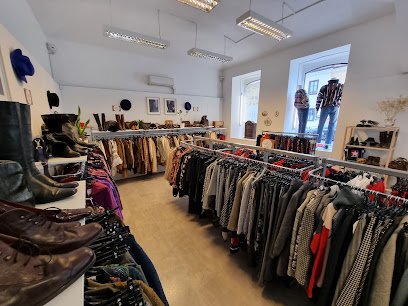
GUD Shop
Explore GUD Shop in Ljubljana for unique gifts and local crafts that celebrate Slovenian creativity and culture.
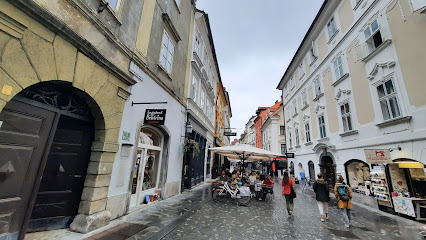
Limittted Sneaker Boutique
Discover the latest in sneaker fashion at Limittted Sneaker Boutique in Ljubljana, where style meets exclusivity.
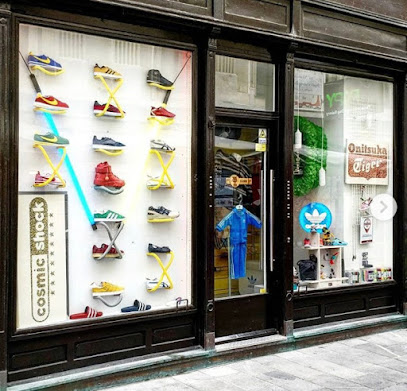
Essential bars & hidden hideouts
Cutty Sark Pub
Discover the lively atmosphere of Cutty Sark Pub in Ljubljana, where local culture meets vibrant nightlife in a cozy bar setting.
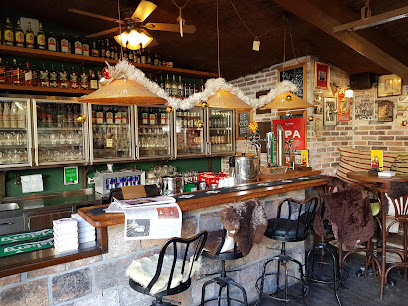
Parlament pub
Experience the vibrant nightlife at Parlament Pub, the heart of Ljubljana's social scene, offering a unique blend of local culture and entertainment.
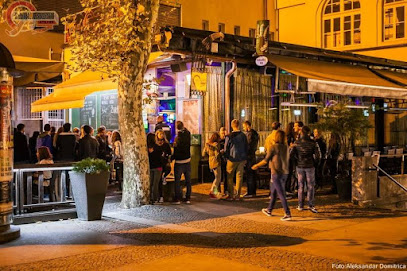
Makalonca
Experience the unique charm of Makalonca, a riverside bar in Ljubljana offering delicious hamburgers and expertly crafted espresso.
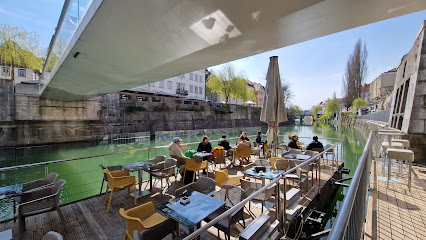
Captain's Cabin
Discover the nautical charm of Captain's Cabin, a vibrant bar in Ljubljana offering delightful drinks and a lively atmosphere for all visitors.
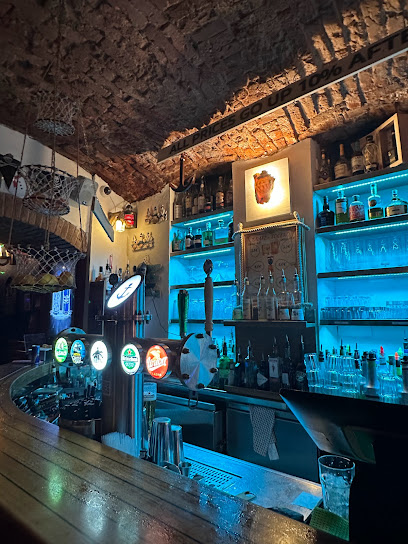
Pritličje
Discover the vibrant atmosphere of Pritličje, a must-visit bar in Ljubljana offering an array of local drinks and cultural experiences.
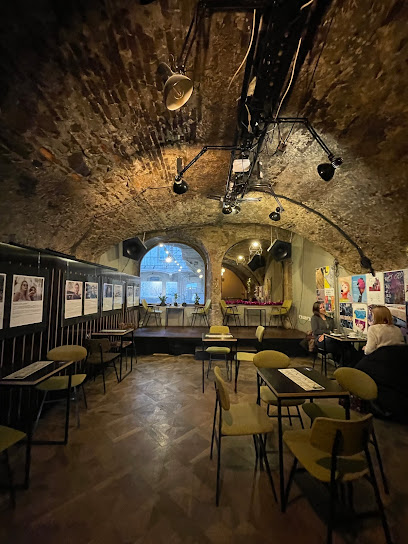
Premier Pub
Discover the lively Premier Pub in Ljubljana, where great drinks, delicious food, and a vibrant atmosphere await you by the riverside.
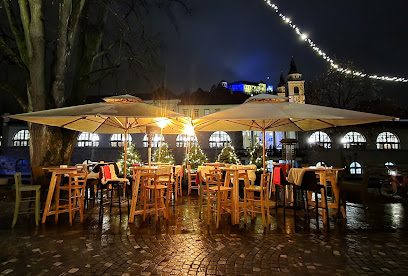
Dvorni Bar
Discover the essence of Slovenian wine culture at Dvorni Bar, a cozy hideaway in Ljubljana's vibrant heart.
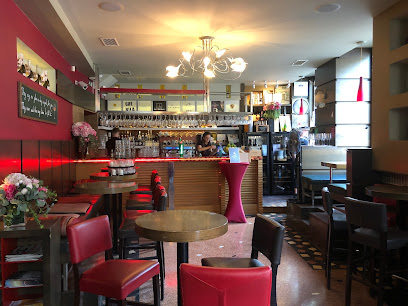
Klub Daktari
Discover the lively spirit of Ljubljana at Klub Daktari, a vibrant bar offering a unique ambiance and an extensive drink selection.
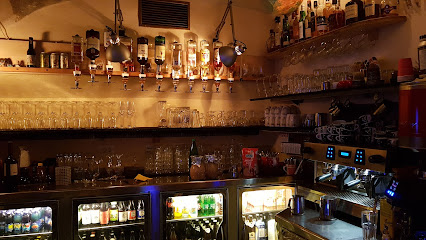
Wine Bar Šuklje
Experience the finest selection of Slovenian wines and local delicacies at Wine Bar Šuklje, a delightful spot in Ljubljana's vibrant heart.
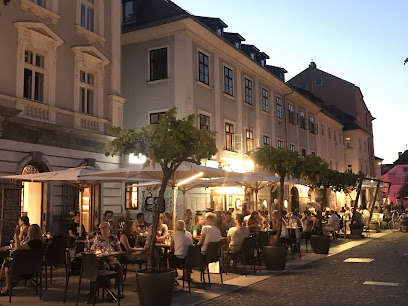
Bar 'Shooters'
Discover the vibrant nightlife of Ljubljana at Bar 'Shooters' - where great drinks, music, and unforgettable experiences await.
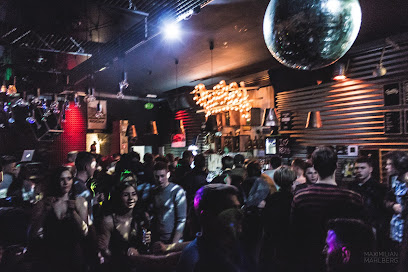
Corner pub
Experience the heart of Ljubljana at The Corner Pub, where local charm meets a vibrant atmosphere for every traveler.
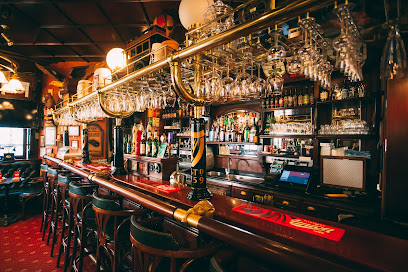
Bar Lockal
Discover the vibrant atmosphere of Bar Lockal, a must-visit bar in Ljubljana, offering a delightful mix of local drinks and stunning riverside views.
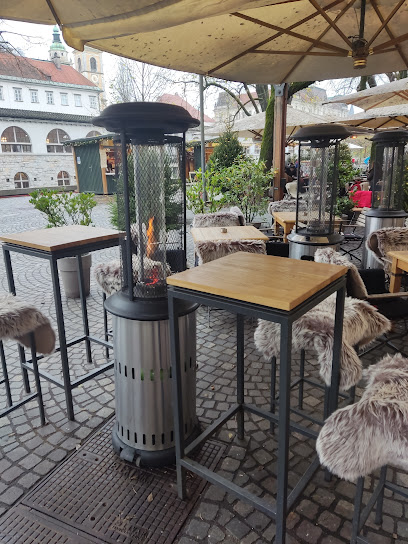
Godec Pub
Experience authentic Slovene nightlife at Godec Pub, a vibrant local favorite in the heart of Ljubljana offering a wide selection of drinks and a lively atmosphere.
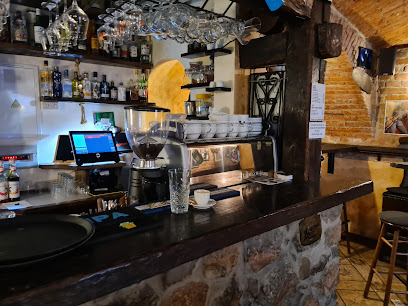
LP BAR
Discover the vibrant ambiance of LP BAR in Ljubljana, where chic design meets delicious drinks and lively social scenes.
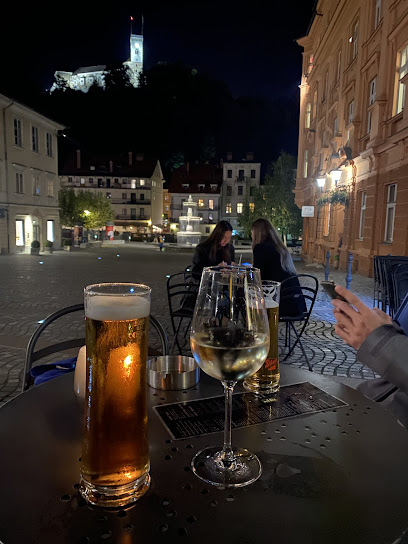
Apotheka cocktail bar
Apotheka cocktail bar offers a unique mix of expertly crafted drinks and a vibrant atmosphere in the heart of Ljubljana, perfect for all cocktail lovers.
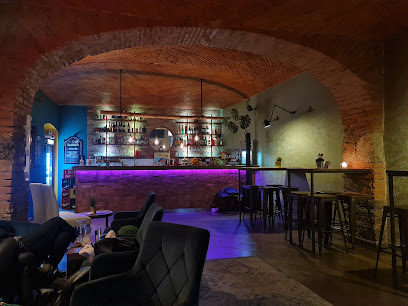
Local Phrases
-
- HelloZdravo
[Zdrah-voh] - GoodbyeNasvidenje
[Nah-svee-dehn-yeh] - YesDa
[Dah] - NoNe
[Neh] - Please/You're welcomeProsim
[Proh-seem] - Thank youHvala
[Hvah-lah] - Excuse me/SorryOprostite
[Oh-proh-stee-teh] - How are you?Kako si?
[Kah-koh see] - Fine. And you?Dobro. In ti?
[Doh-bro. Een tee] - Do you speak English?Ali govorite angleško?
[Ah-lee goh-voh-ree-teh ahn-gleh-shkoh] - I don't understandNe razumem
[Neh rah-zoo-mehm]
- HelloZdravo
-
- I'd like to see the menu, pleaseŽelel bi videti jedilnik, prosim
[Zheh-lehl bee vee-deh-tee yeh-deel-neek, proh-seem] - I don't eat meatNe jem mesa
[Neh yehm meh-sah] - Cheers!Na zdravje!
[Nah zdrahv-yeh] - I would like to pay, pleaseŽelel bi plačati, prosim
[Zheh-lehl bee plah-chahtee, proh-seem]
- I'd like to see the menu, pleaseŽelel bi videti jedilnik, prosim
-
- Help!Pomoč!
[Poh-mohch] - Go away!Pojdi stran!
[Poh-jdee strahn] - Call the Police!Pokličite policijo!
[Poh-klee-chee-teh poh-lee-tsee-yoh] - Call a doctor!Pokličite zdravnika!
[Poh-klee-chee-teh zdrahv-nee-kah] - I'm lostIzgubil sem se
[Eez-goo-beel sehm seh] - I'm illBoln sem
[Boh-ln sehm]
- Help!Pomoč!
-
- I'd like to buy...Želel bi kupiti...
[Zheh-lehl bee koo-pee-tee] - I'm just lookingSamo gledam
[Sah-moh gleh-dahm] - How much is it?Koliko stane?
[Koh-lee-koh stah-neh] - That's too expensiveTo je predrago
[Toh yeh preh-drah-goh] - Can you lower the price?Lahko znižate ceno?
[Lah-koh znee-zah-teh cheh-no]
- I'd like to buy...Želel bi kupiti...
-
- What time is it?Koliko je ura?
[Koh-lee-koh yeh oo-rah] - It's one o'clockJe ena ura
[Yeh eh-nah oo-rah] - Half past (10)Pol desetih
[Pohl deh-seh-teeh] - MorningJutro
[Yoo-troh] - AfternoonPopoldne
[Poh-pol-dneh] - EveningVečer
[Veh-chehr] - YesterdayVčeraj
[Vcheh-rah-y] - TodayDanes
[Dah-nehs] - TomorrowJutri
[Yoo-tree] - 1Ena
[Eh-nah] - 2Dva
[Dvah] - 3Tri
[Tree] - 4Štiri
[Shtee-ree] - 5Pet
[Peh-t] - 6Šest
[Shehst] - 7Sedem
[Seh-dehm] - 8Osem
[Oh-sehm] - 9Devet
[Deh-veht] - 10Deset
[Deh-seht]
- What time is it?Koliko je ura?
-
- Where's a/the...?Kje je...
[Kyeh yeh] - What's the address?Kakšen je naslov?
[Kahk-shen yeh nahs-lohv] - Can you show me (on the map)?Mi lahko pokažete (na zemljevidu)?
[Mee lah-koh poh-kah-zheh-teh (nah zehm-lyeh-vee-doo)] - When's the next (bus)?Kdaj je naslednji (avtobus)?
[Kdahy yeh nahs-lehd-nyee (ow-toh-boos)] - A ticket (to ....)Vstopnica (za ...)
[Vstohp-nee-tsah (zah)]
- Where's a/the...?Kje je...
History of Ljubljana
-
Ljubljana's roots can be traced back to the Roman period when it was known as Emona. Founded around 50 BC, Emona was a strategically important Roman colony. Archaeological discoveries, such as the remains of Roman walls and roads, provide insight into its bustling life.
-
By the 12th century, Ljubljana began to take shape as a medieval town. The construction of Ljubljana Castle, initially a wooden fortification, marked the city's growing importance. This period saw the development of narrow, winding streets and the establishment of the city as a crucial trade center.
-
Ljubljana came under the control of the Habsburg Monarchy in the 14th century. The city flourished under their rule, with significant architectural advancements. Baroque-style buildings, such as St. Nicholas Cathedral and the Franciscan Church of the Annunciation, were constructed during this time.
-
One of the most transformative events in Ljubljana’s history was the earthquake of 1895. With a magnitude of over 6.0, it caused extensive damage but also led to a period of reconstruction. The city was rebuilt with a blend of styles, including Art Nouveau, which can still be seen today.
-
During World War II, Ljubljana was occupied first by Fascist Italy and later by Nazi Germany. The city's residents faced significant hardships, including internments and forced labor. This dark period is commemorated by various monuments and memorial plaques throughout Ljubljana.
-
After World War II, Ljubljana became the capital of the Socialist Republic of Slovenia, part of Yugoslavia. The city underwent extensive industrialization and urban development. Iconic structures such as the Ljubljana Central Market and the Republic Square were built during this era.
-
Ljubljana became the capital of an independent Slovenia in 1991 after the dissolution of Yugoslavia. The city has since transformed into a vibrant, modern European capital. It is renowned for its green spaces, like Tivoli Park, and its pedestrian-friendly city center.
-
Ljubljana is not just a political center but also a cultural hub. It hosts numerous festivals, such as the Ljubljana Festival and the Ljubljana International Film Festival. The city is home to important cultural institutions, including the National Gallery and the Slovenian Philharmonic.
-
Ljubljana's architecture is a testament to its rich history. Renowned architect Jože Plečnik left a significant mark on the cityscape with works like the Triple Bridge and the Central Market. His vision has contributed to Ljubljana's unique architectural identity.
-
Ljubljana has a strong commitment to sustainability and green living. In 2016, it was awarded the title of European Green Capital. The city boasts numerous parks and green spaces, and the Ljubljanica River, which flows through the heart of the city, is a focal point for recreational activities.
Ljubljana Essentials
-
Ljubljana, the capital of Slovenia, is well-connected by air, rail, and road. The main international gateway is Ljubljana Jože Pučnik Airport (LJU), located about 25 kilometers north of the city center. The airport is serviced by various European airlines with direct flights from major cities. From the airport, you can take a shuttle bus, taxi, or rent a car to reach the city center. Alternatively, Ljubljana is accessible by train, with direct connections from neighboring countries such as Austria, Italy, and Croatia. Buses and driving are also viable options for those traveling by road.
-
Ljubljana offers a variety of transportation options. The city center is compact and walkable, making it easy to explore on foot. For longer distances, the public transportation system is efficient and includes buses and bike-sharing programs. The Ljubljana Card offers unlimited travel on city buses and discounts to various attractions. Taxis and ride-sharing services like Uber are also available. Renting a car is an option if you plan to explore the surrounding regions, but parking in the city center can be challenging.
-
The official currency in Slovenia is the Euro (EUR). Credit and debit cards are widely accepted in Ljubljana, including in hotels, restaurants, and shops. ATMs are readily available throughout the city for cash withdrawals. It's advisable to carry some cash for smaller establishments and markets. Contactless payment methods are also becoming increasingly popular.
-
Ljubljana is generally a very safe city for tourists. However, like in any other city, it's important to take standard precautions. Avoid poorly lit areas at night, keep your belongings secure, and be aware of your surroundings, especially in crowded places. While there are no specific high-crime areas targeting tourists, it's always best to stay vigilant. Petty crimes like pickpocketing can occasionally occur, especially in busy tourist spots.
-
In case of an emergency, dial 112 for immediate assistance from police, fire, or medical services. Ljubljana has several hospitals and clinics, and pharmacies are widely available for minor health issues. It's advisable to have travel insurance that covers medical emergencies. The U.S. Embassy in Ljubljana can also provide assistance to American tourists in emergency situations.
-
Fashion: Do dress comfortably and casually. Smart-casual attire is suitable for most occasions. Avoid overly revealing clothing, especially when visiting religious sites. Religion: Do respect local customs and traditions. When visiting churches, dress modestly and remain quiet. Public Transport: Do validate your bus ticket upon boarding to avoid fines. Don't eat or drink on public transport. Greetings: Do greet people with a simple 'Dober dan' (Good day) and a handshake. Eating & Drinking: Do try local dishes like 'potica' (a type of pastry) and 'štruklji' (rolled dumplings). Don't rush meals, as dining is often a leisurely affair.
-
To experience Ljubljana like a local, visit the Central Market where you can buy fresh produce and local specialties. Take a stroll along the Ljubljanica River and enjoy the vibrant café culture. Engage with locals, who are generally friendly and willing to share insights about their city. Don't miss a visit to Metelkova Mesto, an autonomous cultural center known for its alternative art and nightlife. For a unique experience, visit Tivoli Park and explore its many walking trails and cultural attractions.
Trending Landmark in Ljubljana
-
Ljubljana Castle
-
Dragon Bridge
-
Tivoli Park
-
Prešernov trg
-
Kongresni Trg
-
AKC Metelkova mesto
-
Nebotičnik - Skyscraper
-
Central Market
-
Triple Bridge
-
Saint Nicholas's Cathedral
-
Botanični vrt Univerze v Ljubljani
-
Ljubljana Castle Funicular
-
Franciscan Church of the Annunciation
-
Ljubljana Free Tour
-
Narodni muzej Slovenije
Nearby Cities to Ljubljana
-
Things To Do in Škofja Loka
-
Things To Do in Kamnik
-
Things To Do in Postojna
-
Things To Do in Bled
-
Things To Do in Bohinj
-
Things To Do in Velenje
-
Things To Do in Celje
-
Things To Do in Sežana
-
Things To Do in Klagenfurt
-
Things To Do in Nova Gorica
-
Things To Do in Trieste
-
Things To Do in Kranjska Gora
-
Things To Do in Opatija
-
Things To Do in Koper
-
Things To Do in Izola













